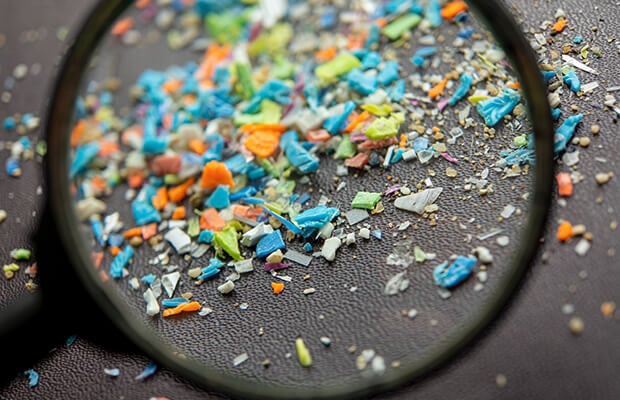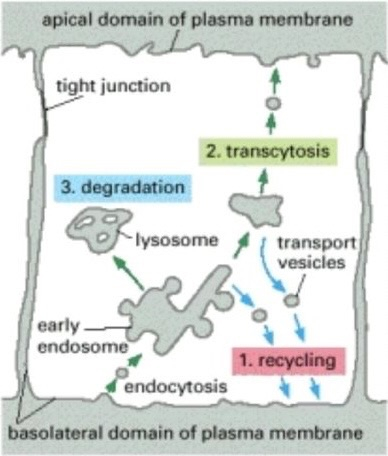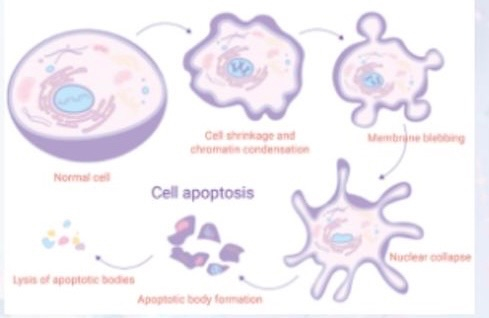How are microplastics impacting or digestive pathways
Shivam Vyas • 2024-07-30
𝙄𝙣𝙨𝙩𝙞𝙩𝙪𝙩𝙚 - 𝙌𝙪𝙚𝙚𝙣 𝙀𝙡𝙞𝙯𝙖𝙗𝙚𝙩𝙝'𝙨 𝙎𝙘𝙝𝙤𝙤𝙡 A group of University of New Mexico researchers have recently found out, microplastics are having a significant impact on our digestive pathways, spreading from issues around the gut to other organs including kidney tissues, the liver and the brain.
Microplastics are typically found in plastic bags, food storage containers and bottle caps, finding their way into the food we eat and the air we breathe, acting as a potential cause for premature deaths. These tiny particles have been found to spread through the ocean, in animals and plants, in tap water and in bottled water- 'they appear to be everywhere. Scientists estimate people ingest roughly 5 grams of microplastic particles per week, which is equivalent to the plastic present in a single credit card. A recent study, led by an associate professor in the Gastroenterology and Hepatology department of the University of New Mexico, exposed mice to microplastics via water, equivalent to the quantity humans supposedly ingest per week, to test for the effects on the gastrointestinal tract and the gut's immune system.
Fig.1- depiction of movement of transport processes within a cell
The first observation was the noticeable spread of the microplastics to the tissues in the liver, kidney and the brain, telling the group of researchers that the microplastic particles can cross the intestinal barrier and accumulate in other parts of the body. The digestive system is an important in the digestion and absorption of nutrients and electrolytes, with the small intestine playing an important role in the absorption of microplastics. Less than 1% of microplastics ingested would cross the intestinal mucus in order to be absorbed. Once these particles have diffused through the mucus, some microplastics would be taken up by migratory phagocytes, some would enter via paracellular persorption, which is simply transport through gaps between cells, and some would be internalised via enterocytes via transcytosis which would be the main mechanism of absorption of microplastics.
This is a mechanism whereby the microplastic particles would bind to the basolateral face (side of the epithelial cell facing the intestinal mucus) of the epithelial cell, stimulating endocytosis to occur. Then the vesicle formed would transport the microplastic particle to the apical face (the side facing the lumen), through the epithelial cell, and then exocytosis would occur, releasing the particle into the lumen. After this occurs, microplastics can pass through fenestrations (pores) in the capillaries, which is a passageway to the body's bloodstream. This then allows the microplastics to spread to the other tissues portrayed in the results of the study.
This study showed changes to gut and other organ health after only brief exposure of 4 weeks, so the effect of prolonged exposure since birth for humans would be even more significant. If a person has an underlying condition such as ulcerative colitis or Crohn's disease, which are both forms of inflammatory bowel disease, microplastic exposure could 'exacerbating' the underlying condition. This leads on to the second important observation of microplastic absorption, which showed that when macrophages internalised or ingested microplastic particles after transcytosis via epithelial cells, their function was altered, and they released inflammatory molecules. This happens as microplastics can induce an increase in lipid peroxidation (a process where free radicals can 'attack' lipids containing carbon-carbon double bonds in their fatty acid tails), which typically occurs as the products of lipid peroxidation act as a signal to trigger an immune response to regulate inflammation. In this case, the increased lipid peroxidation would lead to activation of ferroptosis, which is a form of apoptosis (cell death), hence triggering an inflammatory response. Moreover, the activation of the NF-KB pathway (a crucial signalling pathway involved in regulating immune responses) can lead to paradoxical cell death (cell apoptosis), as NF-kB can induce the expression of genes which would promote apoptosis in certain conditions. Overall, this means the microplastics in the macrophages can cause inflammation of the bowel and be a potential factor worsening pre-existing bowel problems and hence having a significant negative effect on gut health, and immune response. Furthermore, the effect on the function of the macrophages may mean the immune system can become less effective in destroying pathogens, due to prolonged exposure to microplastic particles, including our ingestion of 5 grams of microplastics per week for example.
Fig 2- shows process of cell apoptosis
Overall, microplastics have a significant impact on gut health and the next step of research would be to investigate its effect on the brain, gut microbiota and to understand whether diet has an effect on the uptake of the microplastics in the body. If a person does not have a healthy gut, many studies prove this affects the brain, liver and so many other tissues, so chronic exposure to microplastics could be the cause of many systemic effects.
References [cited 2024 Jan 15]
- Joana C. Prata (2023) Microplastics and human health: Integrating pharmacokinetics, Critical Reviews in Environmental Science and Technology,
53:16, 1489-1511, DOI:
10.1080/10643389.2023.2195798
[Accessed 21 Apr. 2024].
2. ScienceDaily. (n.d.). Microplastics make their way from the gut to other organs. [online] Available at:
https://www.sciencedaily.com/releases
/2024/04/240415163703.htm
[Accessed 21 Apr. 2024].
3. www.bio.davidson.edu. (n.d.).
Transcytosis. [online] Available at:
https://www.bio.davidson.edu/bernd/L
ab/EpithelialInfoWeb/Transevtosis.html
#zatext=Transoytosis%20ccurs%20as
%20membrane%2Dbound Accessed
21 Apr. 2024]. 4.Tianchao Xu, Jie Cui, Ran Xu, Jingwen Cao, Meng-yao Guo,
Microplastics induced inflammation and apoptosis via ferroptosis and the NF-KB pathway in carp, Aquatic Toxicology, Volume 262, 2023, https://dol.org/10.1016/1.aquatox.202
3.106659. [Accessed 21 Apr. 2024].
5. Chao Mao, Guang Lei, Amber Horbath, Boyi Gan, Chapter 3 - Assessment of lipid peroxidation in irradiated cells, Methods in Cell Biology, Academic Press, Volume 172, 2022, Pages 37-50, httos://dol.org/10.1016/bs.mcb.2022.0
5.003. [Accessed 21 Apr. 2024].
Definitions:
Microplastics-
small plastic pieces less than five millimetres
long which can be harmful.
Intestinal mucus -
a jellylike substance that your intestines make to keep the lining of your colon moist and lubricated.
Migratory phagocytes-
Migratory phagocytes, also known as motile phagocytes or mobile phagocytes, are a type of immune cell that possesses both migratory and phagocytic capabilities. The two primary types of migratory phagocytes are neutrophils and monocytes/macrophages.
Enterocytes-
simple columnar epithelial cells which line the inner surface of the small and large intestines.
Macrophages-
a large phagocytic cell found in stationary form in the tissues or as a mobile white blood cell, especially at sites of infection.
Synoptic Links:
GCSE
4.2.2.1 - The human digestive system
4.3 - Infection and response
A-Level
3.2.4 - Cell recognition and the immune system
3.3.3 - Digestion and absorption
3.3.4 - Mass transport
See More Posts
Copyright © 2021 Govest, Inc. All rights reserved.




